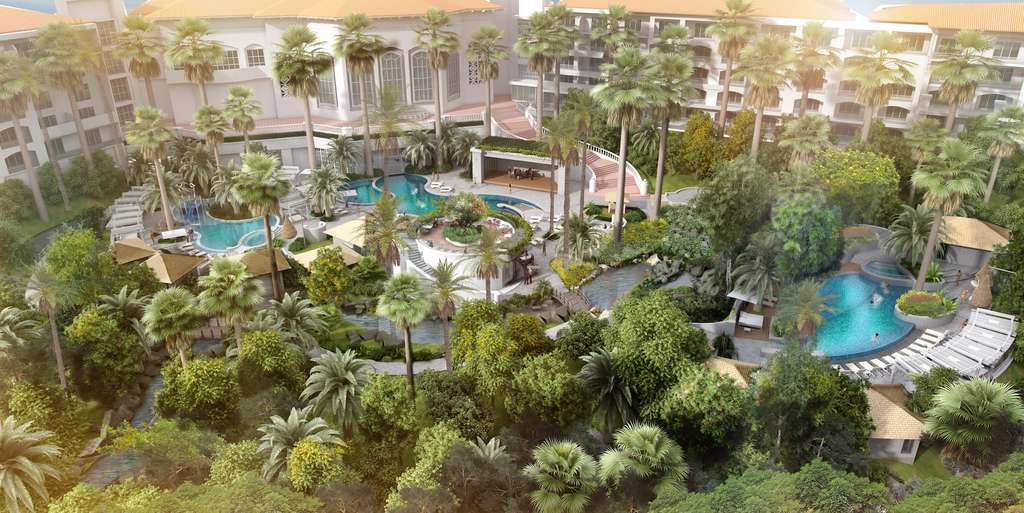Five Trends Shaping The Hospitality Landscape In 2025
WATG’s Advisory Team spotlights emerging hospitality trends, from hyper segmentation to the evolution of informal lodging concepts, that will impact Asia Pacific

SINGAPORE – WATG, the preeminent leader in integrated luxury hospitality design since 1945, spotlights five emerging trends that will shape Asia Pacific’s hospitality industry in 2025 and beyond.
As today’s guests seek more from their destinations, these trends from hyper-segmentation to the evolution of informal lodging concepts emphasize enhanced personalization and contextualization to elevate the overall guest experience.
Here are the emerging trends observed.
1. Hyper Segmentation – Zoning for Success
In today's hospitality landscape, hyper-segmentation has become a key strategy for zoning spaces that can simultaneously cater to distinct guest preferences, optimizing operational efficiency, and enhancing the overall guest experience. By meticulously designing zones that respond to specific demographics, psychographics, preferences, and even emotional states, hospitality destinations can offer highly personalized environments that resonate with the needs and expectations of individual travelers. Whether within wellness-focused areas, vibrant commercial hubs or multi-generational play zones, hyper-segmentation ensures that every guest feels catered to, cultivating a deeper sense of satisfaction and driving longer stays and repeat business.
This strategy ensures a broader appeal for a single property by simultaneously capturing a wide range of demographics while still being able to deliver thoughtfully curated experiences. Unlike lifestyle hotel brands that target niche audiences - to the exclusion of others and potentially limiting revenue opportunities, this approach balances a broader capture combining inclusivity with personalization.
To deliver such spaces, the critical first step is understanding the target market, their specific wants and needs through research, data collection and analysis. This strong understanding of the target user feeds into the amenity and experience strategy, which in turn drives the site planning, interior design and landscape design, all of which work cohesively to create a space tailored for the user.
One clear example of hyper-segmentation can be seen in the design of pool areas, where experiences for different age groups and expectations can and should be effectively curated. Dedicated zones such as safe shaded water play for infants, thematic aquatic play zone for juniors, high octane activity zone for teens, and a variety of spaces catering to the different psychographic wants and needs of adults (think animated party vibes versus serene wellness), each require distinct design and operational strategies.
2. MICE 2.0 – Next Generation of Event Spaces
MICE spaces are increasingly drifting away from conventional black-box venues to embrace a more informal approach. Breakouts are transformed into more fluid, conversational spaces with a focus on underused outdoor landscaped areas and rooftops. The demise of the traditional business center has resulted in its rebirth in the form of playful, resort-centric co-working spaces that support WFR ‘working from resort’, offering an aspirational environment that is uncompromising on the ability to work efficiently.
There is an increasing focus on creating dedicated, highly ‘Instagrammable’ multipurpose ‘experience spaces’ that can accommodate a wide range of events and activities. Set within the landscape or positioned in prominent locations throughout the resort, these spaces often feature signature sculptural designs that visually draw guests in. This new generation of event venues can host everything from private gatherings, weddings, and morning yoga to sound baths, stargazing, and pop-up destination dining experiences.
3. Optional Exclusivity – Choose Your VIP Level
There is a shift in aspirations among a subset of VIPs and HNWIs from a desire for true privacy and exclusivity, such as private areas and secret arrival experiences, to a more social and visible approach where they can choose to be seen and recognized. At the same time, we are also witnessing an upwardly mobile and aspirational guest segment looking for elevated and more unique experiences, and are willing to pay for it. Both can be catered to by dividing spaces into an array of rentable/ bookable subspaces, offering tiers of exclusivity and access. This strategy ensures exclusivity is maintained while offering elevated experiences to those who spend more, driving additional revenue through F&B departments. Beyond booking fees, minimum spends, upselling and revenue generation, these spaces can be used to reward and recognize loyalty members, repeat guests, or high rollers in the integrated resort space. Be it a nightclub, F&B outlet, pool deck, wellness zone or beach, this strategy can be deployed to elevate guest experiences within a single space, driving customization and additional revenue generation.
4. Intertwining Indoors and Out – A Grand Celebration of Nature
The hospitality sector is once again embracing the great outdoors, with a much greater emphasis on how guests can engage with nature through outdoor spaces, both in public spaces as well as in private guestrooms. As well as enhancing the guest experience and celebrating the context, this allows developers to strip back on internal air-conditioned areas to save on construction and operating costs.
In a large villa context, separate bedrooms are often connected via outdoor living and dining areas, offering a balance of private areas and social spaces.
Larger balconies and terraces, outdoor bathrooms and sky villas with private plunge pools and rooftop gardens are all being emphasized. A further example is ground-floor swim-up rooms where guests have direct access to the resort’s pool from the comfort of their rooms have shown to have the potential to enhance room rates by 30 percent or more.
For wellness spaces, a lighter touch approach is increasingly observed where nature is considered to be the asset rather than the spa, supporting a ‘rewilding of the mind’ and an escape from everyday life through immersive natural experiences. For example, treatment cabins, private onsen gardens, meditation copse all take guests into nature for their wellness experience.
5. Experiential Informal Lodging – Glamping and Beyond
Modern travelers are increasingly considering opting for distinctive lodging concepts, craving personal or quirky touches that turn a stay into an adventure. This trend toward novelty has driven the popularity of alternative accommodations, expanding travelers' choices beyond traditional hotels.
The market for experiential lodging is projected to grow a CAGR of 14.7 percent from 2023 to 2033, reaching US$ 627.8 billion by 2033. Glamping has emerged as significant trend within this segment.
Prefabricated pods provide an additional advantage by reducing construction costs and touching the site lightly—a timely solution amid rising construction costs and with ESG now top of the agenda. Offering a reconnection with nature to maximize memorability for guests, their low-impact, high-return model has drawn major operators into this space like Accor’s Our Habitas and Banyan Tree’s Escape. WATG are increasingly activating this approach to either supplement the guestroom inventory of traditional resorts or to create entire resort destinations made up of these unique experiential lodging concepts.
Taking a variety of forms, from cabins, pods, tents, yurts, and treehouses, these concepts appeal primarily to those wanting to blend immersive experiences with comfort and connection with nature.
As 2025 approaches, the hospitality industry is witnessing a shift from reactive measures toward a more strategic and sophisticated approach to drive long-term success and match fast evolving guest expectations. While the trends of the past such as flexible spaces for bleisure travelers have laid the groundwork, the focus has now evolved into a nuanced recalibration of guest experiences, operational efficiencies, and design innovations. These emerging trends are not about complete transformation, but rather the refining of strategies to elevate service offerings, enhance guest satisfaction, and promote sustainable growth in a competitive landscape. Hospitality leaders are now harnessing deeper insights to optimize every facet of the guest journey and operational excellence. Guy Cooke, Studio Director of Advisory.
As WATG approaches its 80th anniversary in 2025, the firm remains committed to delivering exceptional experiences through design innovation that not only responds to current trends but anticipates the evolving needs of tomorrow’s travelers. This forward-thinking approach has enabled WATG to build enduring business resilience—adapting to market shifts, elevating guest experiences, and setting new benchmarks for excellence across the hospitality landscape. With a legacy rooted in creativity and a future shaped by continuous innovation, WATG is poised to lead the next chapter of global hospitality design for decades to come.












